Enjoy Busan
Busan National Museum of Science offers hands-on learning

The Busan National Museum of Science.
In 2006, citizens petitioned the government to establish a national science museum in Busan. Around 1.14 million individuals participated in the campaign to fill a longstanding void in the region's educational offerings. Nearly a decade later, the Busan National Science Museum opened its doors, one of seven national science museums in the country.
Established in December 2015, the museum's impact was felt immediately. Within just one year of opening, it welcomed over 1.5 million visitors. Since then, the Busan National Science Museum has become a hub of learning and play for residents and tourists alike.
■ Main Building
The museum offers a dynamic blend of education and entertainment, serving as a science theme park where families can relax and have fun. The exterior of the building resembles the bow of a ship, promising visitors a day of discovery. At its heart is Science Hall, where over 80% of the exhibits offer hands-on, sensory-based learning activities.
Upon entering the Main Building, visitors can find the Children's Science Hall, which caters to children aged 13 months to 6 years old. Kids are encouraged to run around and play as if they were at a playground. Admission opens four times a day, and each session accommodates up to 300 people. Tickets cost 1,000 won per person.
Adjacent is Kim JinJae Hall, named after the congressman who donated 1 billion won towards the museum's construction. The hall hosts special exhibitions. Currently on display is "Are You Ready?" which delves into the science and mathematics behind exercise and elite sports training. The exhibition opens four times a day for 250 people at a time. Tickets cost 3,000 won for visitors 6 and under and 6,000 won for children aged 7 and up.
The museum's most popular attraction is the Dynamic Slide, which stands in the center of the building. Older kids love the its twists and turns, which stretch seven meters from the second to the first floor. The free ride opens three times per day. Visitors under 110 centimeters tall are not allowed to ride the slide for safety reasons.
The second floor of the Main Building houses permanent exhibitions. Visitors can explore vehicle and aerospace technologies, shipping, energy and medical science here. Interactive displays offer insights into everything from fluid mechanics to nuclear fusion.
On the second floor, guests can learn how car engines work via augmented reality, then practice driving in a driving simulator. They can also experience the physics of flight through a digital wind tunnel, then pilot drones and aircraft in a simulator. Another popular exhibit is the Gyroscope VR, which takes visitors on an immersive and thrilling virtual reality tour through space.
Tickets cost 2,000 won for minors, 3,000 won for adults, and entry is free for children under 6.
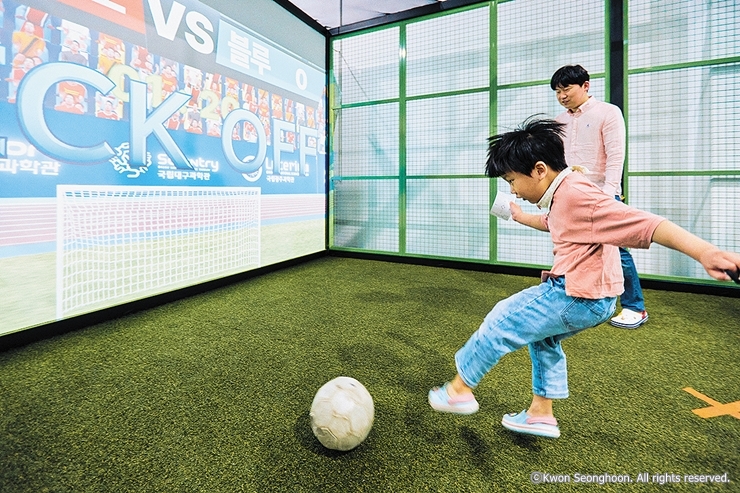
A boy plays soccer at the "Are You Ready?"exhibition.
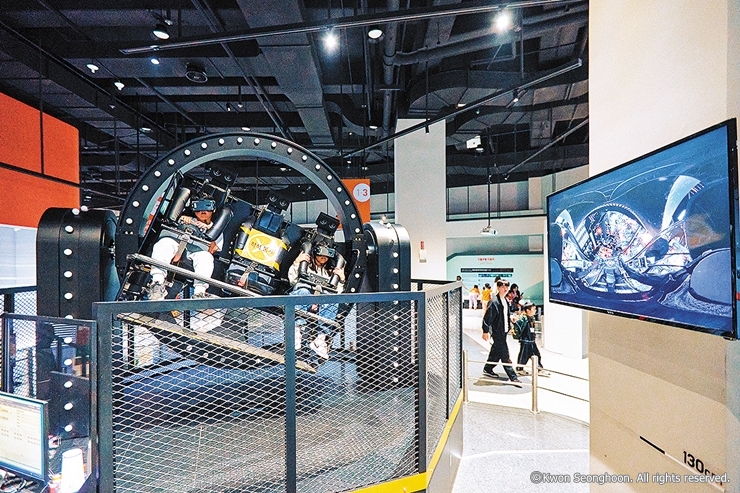
Gyroscope VR takes riders on a thrilling space ride.
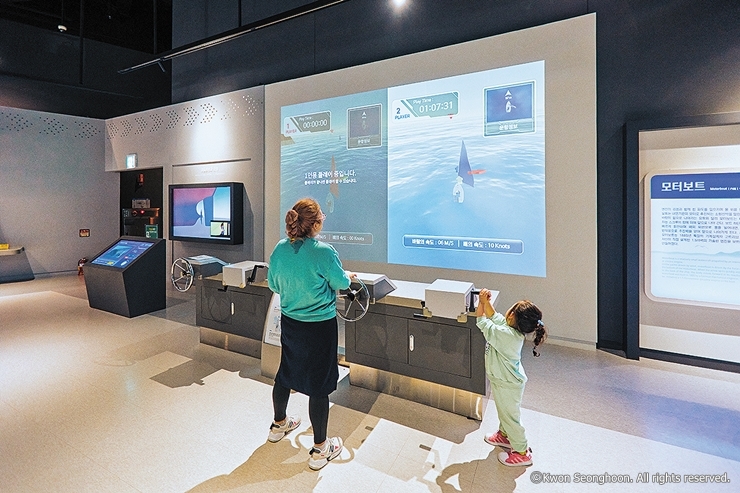
An interactive exhibit lets little kids experience the rush of sailing a yacht.

Use a stationary bike to learn about energy.

Future doctors can practice performing surgery.
■ Children's Science Museum
The Children's Science Museum, nestled behind the Main Building, offers playful and interactive exhibits to engage little ones. In Exhibition Hall 1, kids can craft paper airplanes at the Twinkle Twinkle Workshop and experience infinite reflections in the Room of Infinite Mirrors. Head to Exhibition Hall 2 and marvel at the giant Newton's Cradle, which demonstrates the most fundamental laws of physics and mechanics. Admission costs 2,000 won for all and is free for kids under 36 months old.
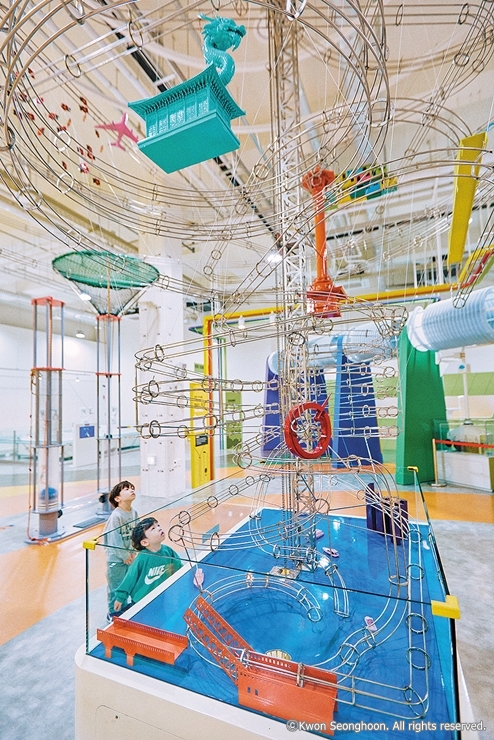
Children's Science Museum keeps kids engaged.
■ Planetarium
The striking white dome adjacent to the Main Building houses the Planteraium, a wonderland of space exploration. The center amazes visitors with gigantic projections of star constellations against the giant domed screen. The Planetarium also presents 40-minute animations that explain cosmic concepts for different age levels. For example, "Cocomong' A Space Adventure" presents the moon and stars for the youngest viewers, while "Gravity" examines physics on a level more appropriate to middle and high school students. Screenings are held six times daily. Admission is open to anyone over 36 months old and costs 1,500 won per person.
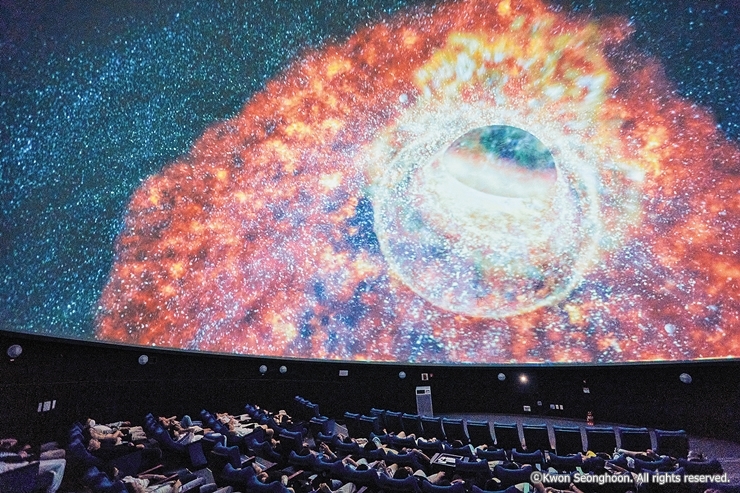
Animations in the Planetarium help kids of all ages understand space science.
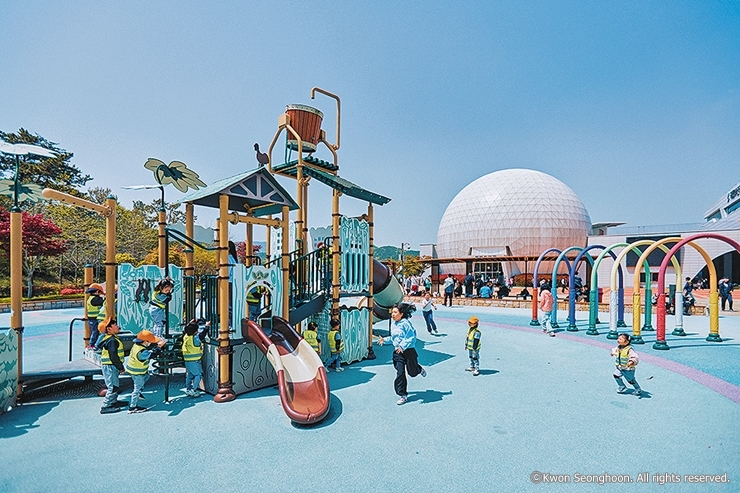
Outdoor playground in front of the Planetarium.
The Busan National Science Museum is open from 9:30 a.m. to 5:30 p.m., with last admission at 4:30 p.m. It is closed on Mondays, New Year's Day, Lunar New Year's Day and Chuseok. For more information, visit the museum's homepage (sciport.or.kr/eng).
Vocab Spotlight
longstanding: 오래 지속된
caters to: ~이 대상인
encouraged: 격려되는, 장려되는
Adjacent: 인접한
nestled: 아늑하게 자리잡은
gigantic: 거대한
constellations: 별자리

